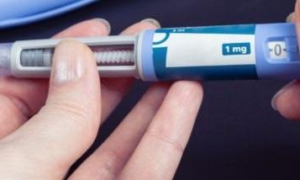Importance of Weight Loss in Health
Losing weight can help you feel better about your energy levels, sleep patterns, and cardiovascular health. Think things out before using any weight-loss medications. You should be aware of Tirzepatide side effects even though it might aid in weight loss. Nausea, diarrhea, and infrequently, more serious reactions are among these symptoms. For safe and efficient weight loss, speak with a doctor about the advantages, disadvantages, and side effects of weight loss medications.
Beyond just causing physical pain, obesity has an impact on almost every element of health. Obesity raises the risk of high blood pressure, diabetes type 2, cardiovascular disease, and a number of cancers. It is essential for both longevity and quality of life. Evaluating Tirzepatide side effects and benefits in relation to the main health problems associated with obesity is critical. Making educated judgments about their health and weight reduction can be aided by a strict and thoroughly studied obesity prevention approach.
Weight Loss with Tirzepatide
Tirzepatide unique mechanism targets GLP-1 and GIP receptors. This approach reduces appetite and increases insulin production to help you lose weight. Tirzepatide may treat obesity, but it can cause adverse effects like hypoglycemia. Follow your doctor’s instructions to treat these adverse effects.
Tirzepatide weight loss benefits were highlighted by 6- to 12-month clinical trials. This medicine could change weight control, offering obese people hope. Patients must weigh Tirzepatide benefits against Tirzepatide side effects. Follow the treatment plan and live a healthy lifestyle to maximize benefits of Tirzepatide and avoid unwanted effects.
Treating gastrointestinal and hypoglycemic Tirzepatide side effects is crucial to patient safety. Medical staff must train patients how to spot these adverse effects so they can be addressed quickly. We can ensure that weight reduction and metabolic health advantages are not overwhelmed by pain or difficulties and that the treatment is helpful to everyone by employing this technique.
Common Side Effects of Tirzepatide
- People with type 2 diabetes most frequently experience nausea and vomiting as adverse effects after taking Tirzepatide. These gastrointestinal problems may have an effect on drug adherence and quality of life. During the Tirzepatide adjustment period, there may be an impact on digestion and appetite. Many notice an improvement in the negative symptoms as the medication begins to work in the body. Regarding managing the potential for these adverse effects to persist beyond the completion of therapy, patients should consult with their physicians.
- Constipation and diarrhea are two common gastrointestinal Tirzepatide side effects. Though less unpleasant than nausea and vomiting, these sensations can nonetheless cause discomfort and make a patient’s life difficult. Much like a lot of other gastrointestinal problems, this could be brought on by changes in medicine. People who have severe or ongoing gastrointestinal problems should see a doctor because reactions can differ. When taking Tirzepatide, it could be essential to modify one’s diet, drink more water, or take extra medication to reduce discomfort and improve the management of diabetes.
- Tirzepatide can cause hypoglycemia, which should be taken seriously in diabetics using various medications. Sweating, shivering, disorientation, and a fast heartbeat are life-threatening hypoglycemia symptoms. Tirzepatide can cause hypoglycemia in insulin and sulfonylurea users, so check their blood sugar often. This treatment requires patients to recognize and treat low blood sugar quickly.
- As with subcutaneous drugs, Tirzepatide may cause injection site reactions. Itching, redness, swelling, and soreness at the injection site are Tirzepatide side effects. Although mild and transient, these symptoms may make a patient uncomfortable and discourage therapy. To avoid discomfort and severe injection site responses, doctors and patients must discuss injection protocols and site rotation.
- Chronic fatigue or poor energy can impair daily life. Although less harmful than hypoglycemia, fatigue can nonetheless damage a patient’s lifestyle and well-being. It’s unclear why Tirzepatide makes you fatigued, but it may affect blood sugar or metabolism. Sleepiness should be discussed with a doctor because it may indicate a need to adjust the treatment plan or lessen adverse effects.
Tips for Managing Tirzepatide Side Effects
Working Closely With Healthcare Provider
A proactive patient-provider cooperation is needed to manage Tirzepatide side effects. Early management can reduce side effects, therefore report any discomforts or side effects. A doctor may recommend medication modifications, diet changes, or physical activity to reduce side effects. Keeping a detailed symptom record might also improve treatment planning. Patients should keep regular follow-up appointments to evaluate and adapt their treatment.
Proper Injection Technique
To avoid tissue stiffening and discomfort, patients should rotate injection sites between the abdomen, thighs, and upper arms. Alcohol must be used to disinfect the injection site before administering the drug to prevent infection. Let the drug reach room temperature before injecting to reduce pain. Following these guidelines ensures the medication’s efficacy and improves treatment by reducing Tirzepatide side effects.
Lifestyle Modifications
Patients can reduce digestive issues by limiting processed foods and eating a variety of fruits, vegetables, and complete grains. Also, an organized exercise routine customized to individual fitness levels and interests might boost mental health and physical resilience to adverse effects. These dynamic treatment modifications should be finely calibrated and altered with healthcare specialists to match Tirzepatide pharmacological activity. This holistic method manages Tirzepatide side effects and promotes health and lifestyle.
Hydration
Drinking enough water can help reduce the negative symptoms of Tirzepatide by improving digestion and encouraging regular bowel movements. It is advised that patients consume eight glasses of water or more each day, though this may change depending on their needs and degree of activity. Drinking water frequently over the day as opposed to ingesting a lot at once will also help avoid any discomfort. It’s also a good idea to cut out on sugary and caffeinated drinks, as these might worsen dehydration. Maintaining adequate hydration not only helps mitigate some of the Tirzepatide side effects but also improves general health and wellness.
Monitoring Blood Sugar Levels
One of the most important parts of managing Tirzepatide side effects is keeping an eye on blood sugar levels, especially for people whose glucose readings tend to fluctuate. Frequent monitoring can assist in identifying any notable changes early on, enabling timely modifications to treatment regimens. In order to create a customized blood sugar testing regimen that fits their individual requirements and treatment objectives, patients using Tirzepatide should collaborate closely with their medical professionals. Monitoring blood sugar levels guarantees that the drug is effective in producing the desired health outcomes and helps in the early diagnosis and prevention of any possible side effects.
Monitoring and Reporting Side Effects
Patient treatment must include recording and reporting Tirzepatide side effects to ensure safety and efficacy. Routine checkups can detect side effects early. Doctors might adjust medications, treatment plans, or countermeasures to reduce side effects. This meticulous method maximizes Tirzepatide medicinal benefits and minimizes patient health risks. Patient adherence and faith in therapy improve results.
Tirzepatide side effects must be reported to a doctor to tailor treatment. It ensures that negative responses are noticed and quickly addressed to benefit the patient. This direct feedback loop between patient and doctor empowers patients to actively participate in their treatment, promoting informed healthcare. It also improves treatment guidelines and patient care by increasing medical understanding of Tirzepatide effects.
Balancing Benefits and Risks
Weight loss can benefit your health by lowering blood pressure, increasing mobility, and improving cardiovascular health, but it is critical to assess the benefits and drawbacks, particularly when considering medical therapies. When taking Tirzepatide for weight loss, be aware of the potential adverse effects. Patients should consult their doctors before beginning a new treatment plan because Tirzepatide side effects might range from minor gastrointestinal troubles to serious complications. This thorough assessment ensures that weight loss contributes to the individual’s health goals while reducing dangers.
Long-term variables are critical when taking Tirzepatide to lose weight, especially given its negative effects. Patients undergoing this treatment must communicate honestly with their doctors. By revealing the long-term consequences of Tirzepatide, healthcare practitioners can assist patients in weighing the benefits and drawbacks based on their health profile and treatment duration. Patients must document undesirable effects and assess how well the medication is reaching their health objectives. This collaborative approach guarantees that Tirzepatide is administered for the patient’s long-term health.



































